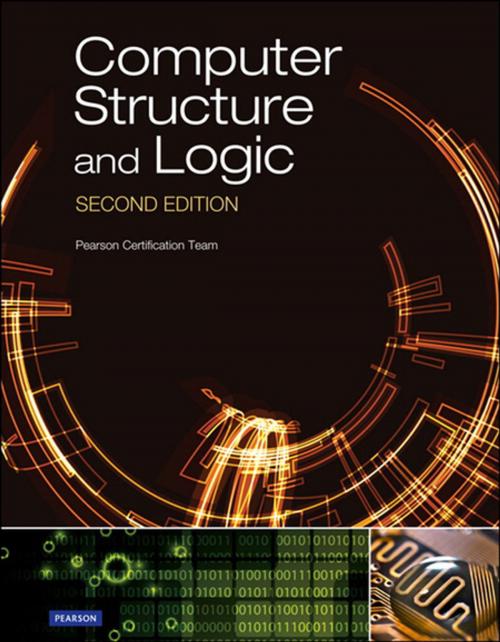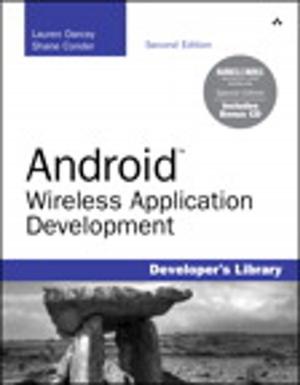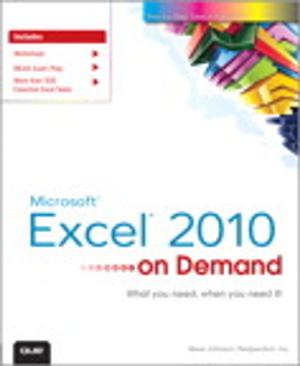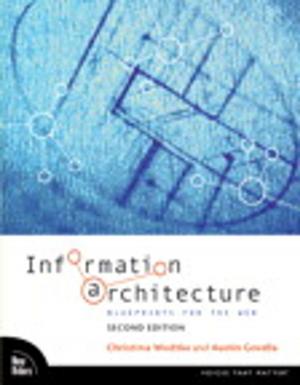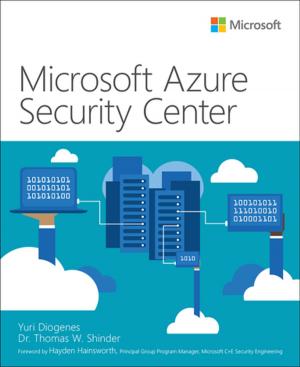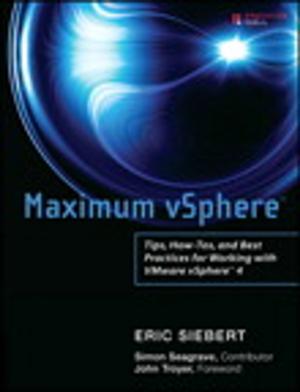Computer Structure and Logic
Computer Structure Log ePub2
Nonfiction, Computers, General Computing, Skills| Author: | David L. Prowse | ISBN: | 9780133517453 |
| Publisher: | Pearson Education | Publication: | October 28, 2014 |
| Imprint: | Pearson IT Certification | Language: | English |
| Author: | David L. Prowse |
| ISBN: | 9780133517453 |
| Publisher: | Pearson Education |
| Publication: | October 28, 2014 |
| Imprint: | Pearson IT Certification |
| Language: | English |
Computer Structure and Logic
** **
Computer Structure and Logic, Second Edition gives you a complete overview of modern computer technology, from desktop and laptop PCs to mobile devices, hardware to operating systems, basic security to networking. Requiring no previous knowledge of computers, this textbook helps you build your knowledge and hands-on skills one easy step at a time.
The book starts by reviewing the history of computing and explaining what nearly all modern computers have in common, whether they are immensely powerful supercomputers, personal computers, or even smartphones. Next, it explains how computers process information, how hardware components are brought together in a working computer, and what happens “behind the scenes” when you turn on a computer.
Building on this essential hardware knowledge, the book then turns to software. You learn how modern operating systems, such as Windows, Linux, and Android, work and how operating systems are organized, configured, and managed. You then learn how computers can be connected into networks such as the Internet, and how networked computers communicate using shared protocols such as TCP/IP.
Computer Structure and Logic introduces modern innovations that are reshaping computing for both businesses and individuals, including virtual and cloud computing. Next, it introduces the basics of computer and network security, showing how to protect computers, information, and services from unwanted intrusion, unauthorized access, and/or the modification or destruction of data. The text concludes with a full chapter on troubleshooting, including a complete six-step process for identifying and solving computer problems of all kinds.
Full of real-world practical examples, Computer Structure and Logic, Second Edition gives you foundational knowledge and skills for starting your career in information technology, and for taking your first steps toward official certification from leading organizations such as CompTIA, Microsoft, and Cisco.
Powerful features make learning about computers easier!
--Clear introductions describe the big ideas and show how they fit with what you’ve already learned
--Specific chapter objectives tell you exactly what you need to learn
--Key terms lists help you identify important terms, and a complete glossary helps you understand them
--Glossary defines more than 250 essential computing terms
--Notes point out important transitions, key connections to other topics, items that might otherwise be lost in the detail, and real-world application of the topic at hand
--Chapter Review Activities call on you to define key terms, answer review questions, and work through case studies to help you make sure you’ve learned the material
Coverage includes
--Basic computer concepts
--Computer math, measurement, and processing
--Motherboards and buses
--CPUs
--Memory and storage
--I/O devices and ports
--Operating a computer
--Operating systems: characteristics and interfaces
--Operating systems: architecture, configuration, and management
--Networks
--Virtualization and cloud computing
--Basic security
--Computer troubleshooting
Computer Structure and Logic
** **
Computer Structure and Logic, Second Edition gives you a complete overview of modern computer technology, from desktop and laptop PCs to mobile devices, hardware to operating systems, basic security to networking. Requiring no previous knowledge of computers, this textbook helps you build your knowledge and hands-on skills one easy step at a time.
The book starts by reviewing the history of computing and explaining what nearly all modern computers have in common, whether they are immensely powerful supercomputers, personal computers, or even smartphones. Next, it explains how computers process information, how hardware components are brought together in a working computer, and what happens “behind the scenes” when you turn on a computer.
Building on this essential hardware knowledge, the book then turns to software. You learn how modern operating systems, such as Windows, Linux, and Android, work and how operating systems are organized, configured, and managed. You then learn how computers can be connected into networks such as the Internet, and how networked computers communicate using shared protocols such as TCP/IP.
Computer Structure and Logic introduces modern innovations that are reshaping computing for both businesses and individuals, including virtual and cloud computing. Next, it introduces the basics of computer and network security, showing how to protect computers, information, and services from unwanted intrusion, unauthorized access, and/or the modification or destruction of data. The text concludes with a full chapter on troubleshooting, including a complete six-step process for identifying and solving computer problems of all kinds.
Full of real-world practical examples, Computer Structure and Logic, Second Edition gives you foundational knowledge and skills for starting your career in information technology, and for taking your first steps toward official certification from leading organizations such as CompTIA, Microsoft, and Cisco.
Powerful features make learning about computers easier!
--Clear introductions describe the big ideas and show how they fit with what you’ve already learned
--Specific chapter objectives tell you exactly what you need to learn
--Key terms lists help you identify important terms, and a complete glossary helps you understand them
--Glossary defines more than 250 essential computing terms
--Notes point out important transitions, key connections to other topics, items that might otherwise be lost in the detail, and real-world application of the topic at hand
--Chapter Review Activities call on you to define key terms, answer review questions, and work through case studies to help you make sure you’ve learned the material
Coverage includes
--Basic computer concepts
--Computer math, measurement, and processing
--Motherboards and buses
--CPUs
--Memory and storage
--I/O devices and ports
--Operating a computer
--Operating systems: characteristics and interfaces
--Operating systems: architecture, configuration, and management
--Networks
--Virtualization and cloud computing
--Basic security
--Computer troubleshooting
